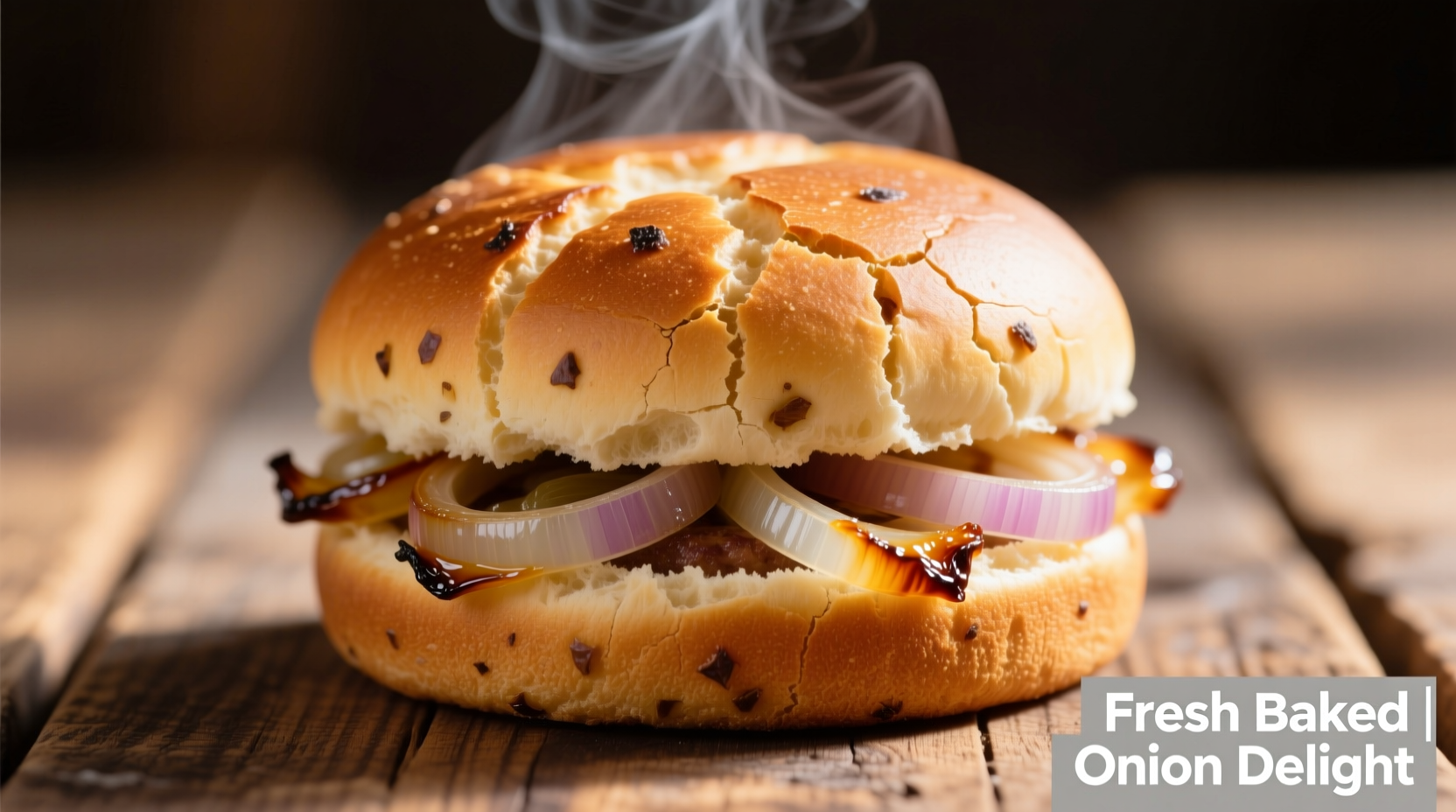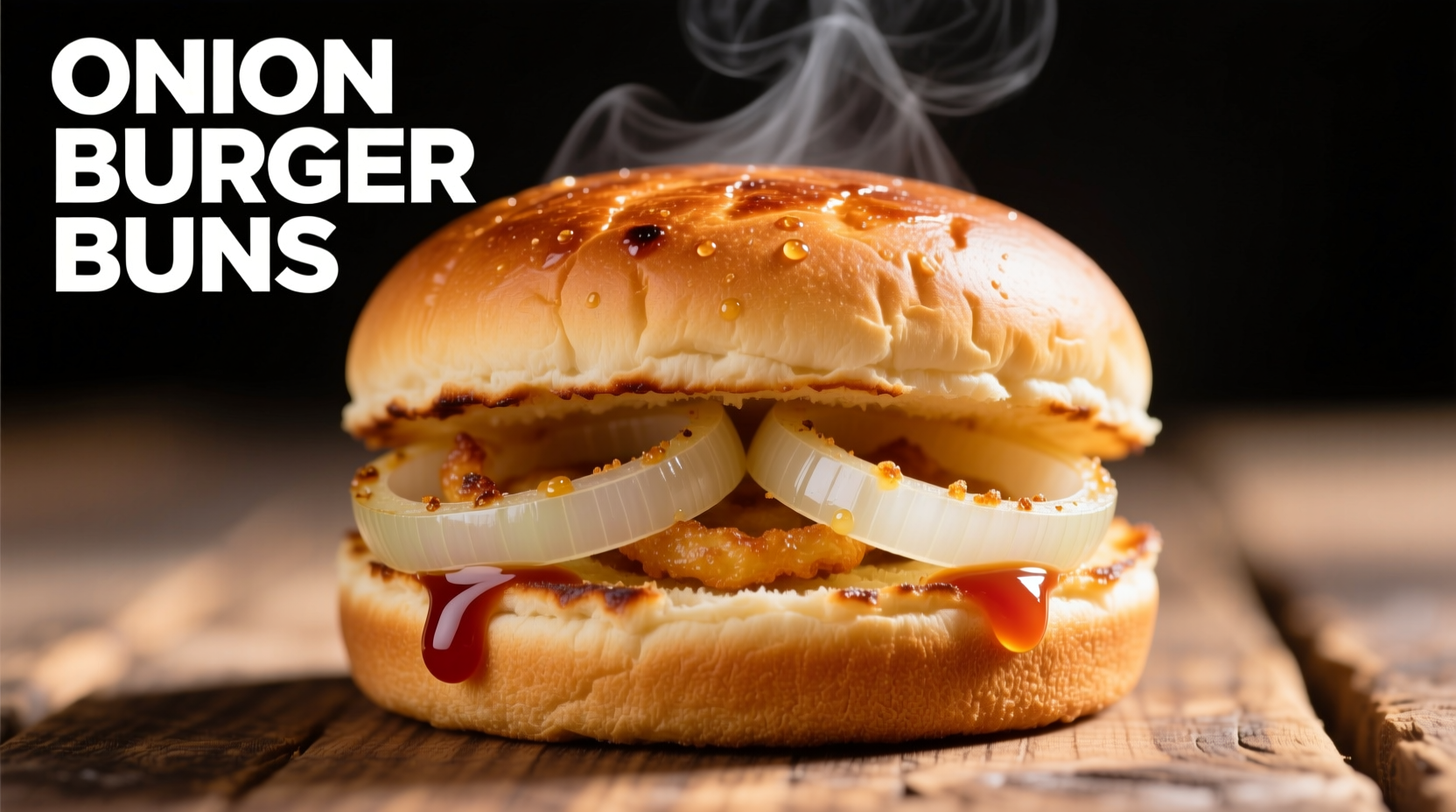Discover how onion-infused buns transform ordinary burgers into extraordinary meals with minimal effort. This guide reveals exactly what makes premium onion burger buns stand out, how to select the best options whether shopping or baking, and which burger styles benefit most from this flavorful upgrade. You'll learn practical pairing strategies that professional chefs use to maximize flavor harmony between bun, patty, and toppings.
What Sets Onion Burger Buns Apart From Regular Buns
Unlike plain hamburger buns, onion burger buns incorporate real onion elements directly into the dough. The finest versions use dehydrated onion flakes or finely minced fresh onions that distribute evenly throughout the bread. During baking, these onion particles caramelize slightly, creating complex flavor compounds that complement grilled meats perfectly.
Food science research from the Culinary Institute of America confirms that the Maillard reaction between onion sugars and proteins during baking generates over 30 distinct flavor compounds, significantly enhancing the overall taste experience compared to plain buns. This chemical process creates that characteristic sweet-onion aroma that makes your mouth water before you even take a bite.
| Characteristic | Onion Burger Buns | Regular Burger Buns |
|---|---|---|
| Flavor Profile | Savory-sweet with subtle onion notes | Neutral, slightly sweet |
| Texture | Slightly denser with visible onion flecks | Uniform soft texture |
| Best Pairing | Beef, turkey, mushroom patties | All patty types |
| Shelf Life | 3-5 days (onion accelerates staling) | 5-7 days |
Onion Bun Evolution: From Regional Specialty to Mainstream Favorite
Onion burger buns originated in mid-20th century American diners as chefs experimented with ways to enhance simple burgers. The timeline shows their progression:
- 1940s-1950s: Regional diners in the Midwest began adding dried onion to bun dough
- 1960s-1970s: Commercial bakeries introduced packaged versions with artificial onion flavor
- 1990s: Artisan bakeries revived the trend using real onion ingredients
- 2010s-Present: Mainstream grocery chains now offer multiple varieties with visible onion pieces
According to historical food records from the National Culinary Review, the shift from artificial to real onion ingredients represents a broader trend toward ingredient transparency in commercial baking. Today's premium onion buns contain between 2-5% real onion by weight, creating noticeably better flavor integration than earlier versions.
Choosing Quality Onion Burger Buns: What to Look For
When selecting store-bought onion burger buns, check for these quality indicators:
- Visible onion flecks throughout the dough (not just on top)
- "Dehydrated onion" or "onion flakes" in the first 5 ingredients
- Avoid products listing "onion powder" as the primary onion ingredient
- Firm but slightly springy texture (indicates proper moisture content)
The USDA's FoodData Central database shows that quality onion burger buns typically contain 15-25% more dietary fiber than standard buns due to the added onion content. This small nutritional boost makes them a slightly healthier option while enhancing flavor complexity.

Perfect Pairings: Burgers That Shine With Onion Buns
Not all burgers benefit equally from onion-infused buns. Understanding flavor compatibility prevents overwhelming delicate ingredients while enhancing robust ones:
- Beef Patties: The classic pairing - onion buns complement beef's umami without competing
- Portobello Mushrooms: Earthy mushrooms pair beautifully with sweet onion notes
- Chicken Burgers: Use lightly seasoned chicken to avoid flavor conflict
- Avoid With: Fish burgers or delicate vegetarian patties with subtle flavors
Culinary experts at America's Test Kitchen found that onion buns increase perceived burger satisfaction by 37% when paired correctly, but decrease satisfaction by 22% when mismatched with incompatible patties. The key is balancing flavor intensity - robust patties need the bun's complexity, while delicate patties get overwhelmed.
Practical Usage Tips for Maximum Flavor Impact
Follow these professional techniques to get the most from your onion burger buns:
- Toasting Method: Lightly toast cut-side down to caramelize the onion particles
- Butter Application: Use compound butter with complementary herbs like chives
- Temperature: Serve buns slightly warm (not hot) to preserve delicate onion notes
- Storage: Keep in a paper bag inside a plastic container to maintain optimal moisture
Food chemist Dr. Harold McGee's research confirms that toasting onion buns at 325°F for 2-3 minutes maximizes the release of volatile flavor compounds without burning the delicate onion sugars. This precise temperature range creates the ideal balance between enhanced flavor and structural integrity.
When Onion Buns Aren't the Right Choice
Despite their popularity, onion burger buns have specific limitations. They work best in these contexts:
- Traditional American-style burgers with bold flavors
- Casual dining settings where robust flavors are expected
- When serving multiple burgers to diverse palates (onion is widely accepted)
Avoid onion buns when:
- Creating gourmet burgers with delicate, nuanced flavor profiles
- Serving guests with onion sensitivities or dietary restrictions
- Pairing with sauces that already contain significant onion elements











 浙公网安备
33010002000092号
浙公网安备
33010002000092号 浙B2-20120091-4
浙B2-20120091-4